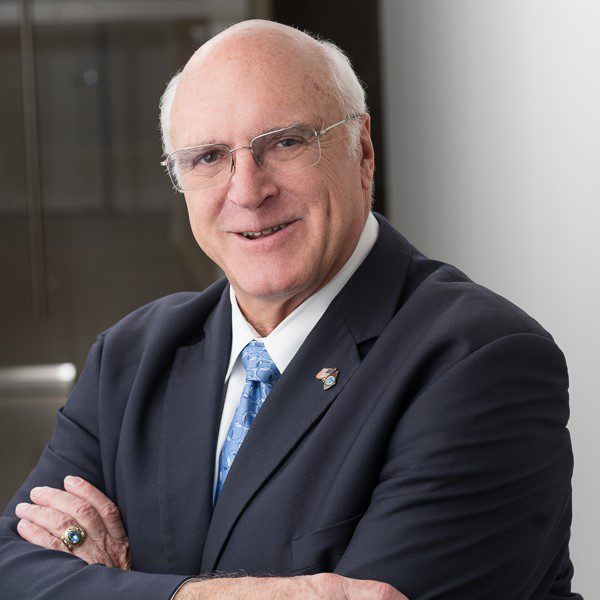
The finalists for WashingtonExec’s Pinnacle Awards were announced Oct. 8, and we’ll be highlighting some of them until the event takes place virtually Nov. 12.
Next up is Cybersecurity Industry Executive of the Year (Public Company) finalist Tommy Gardner, who’s chief technology officer at HP Federal. Here, he talks key achievements, future focus areas, professional risk-taking and more.
What key achievements did you have in 2019/2020?
In 2020 at the outset of the COVID-19 pandemic, I helped to solve the immediate need for enterprise-level security solutions to equip federal employees to work remotely at the onset of the COVID-19 pandemic. I supported HP Federal’s rapid response to equip government agencies and federal customers with enterprise-level secure devices, which include HP’s security technology Sure Click Enterprise and Sure Sense.
Also, I was elected to the American Society of Mechanical Engineers board of governors (effective June 2020) and the American National Standards Institute board of directors. I continued to serve as a leader on quantum information science and partnered with a small business startup to research taking a quantum internet to scale. This could have revolutionary impact on cybersecurity and data protection.
In 2019, I was one of the key architects of HP Federal’s proposal for the end-user hardware portion of the U.S. Navy’s Next Generation Enterprise Network Recompete contract, which HP was ultimately awarded after a competitive process. This contract has an initial value of $358 million and a potential cumulative value of $1.4 billion with options. Since then, I have been heavily involved in supporting the execution of the contract.
What has made you successful in your current role?
I have found success in my current role as chief technology officer of HP Federal by collaborating with my peers in cybersecurity and privacy, data science and program management. At HP, there is always an opportunity to learn, via constant information sharing within the company and with over 35 working groups or what we call Affinity Group of employees working in the same disciplines.
I am also supported by an incredible team across HP Labs and the technologists at HP that are always willing to take time, to help and to provide new perspectives.
What are you most proud of having been a part of in your current organization?
A recent project that I am proud of is working with a team of HP researchers on the development of quantum internet. This next generation of internet will be designed primarily for cybersecurity purposes, such that ease of use and communication capabilities will be a secondary consideration from security of the network.
The objective is to design an unhackable system that will protect data from theft or compromise. I am also working with a new business group within HP focused on microfluidics, to research and create the first fluid computers that can manipulate fluids at the micro liter level.
What are your primary focus areas moving forward, and why are those so important to the future of the nation?
My primary focus area is advancing HP’s presence in the quantum information science field. In partnership with HP Labs, I am involved with research in quantum information and other innovations including device architecture and 3D printing. As an expert on secure infrastructure for quantum information, I advise on security considerations for next-generation devices and products.
I also advise on supply chain risk management to help HP and public sector stakeholders maintain their cyber physical systems. The evaluation of risks involved in navigating supply chain purchasing and secure technology sourcing results in investments that bring more secure systems to our customers. Quantum computing, cybersecurity and supply chain are all critically important to building a secure national infrastructure.
How do you help shape the next generation of government leaders/industry leaders?
This summer, I worked with one of HP’s interns, a young woman named Shannon Lee. Shannon is now pursuing a MBA graduate degree, but during her summer at HP, she collaborated with a group of researchers and explored her own project around designing a net zero energy factory. I also connected her with my colleagues on the U.S. Council of Competitiveness to discuss other sustainability projects.
Shannon was welcomed onto one of our working groups at the council focused on sustainability. She showed that it is important for senior leaders to take a step back and learn from the next generation, and then work together to share information and design new technologies and services.
This collaborative spirit of having an open mind helps to connect with the next generation and will lead to even more impactful discoveries.
What’s the biggest professional risk you’ve ever taken?
The biggest professional risk I have ever taken was to take on a role that I felt was outside of my comfort zone. When I was appointed to the DHS Supply Chain Risk Management Task Force and asked to co-chair the threat evaluation working group, I knew I was not the foremost expert on supply chain risk in the group. It was a learning curve, as a technologist, to join with logisticians who were experts in supply chain.
But this risk paid off, as our diverse backgrounds and specialties allowed us to look outside of traditional supply chain risks and to explore other areas, including cyber. I learned it’s important to work with others in fields where you’re not an expert, because everyone can contribute their unique perspective to the shared goal.

